Main Menu
Latest Blog Entry
User login
How to take charge of your fitness training
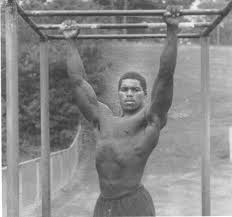 “If you train hard, you’ll not only be hard, you’ll be hard to beat.”
“If you train hard, you’ll not only be hard, you’ll be hard to beat.”
Herschel Walker
Training hard is one part of fitness training, but any idiot can get tired (or indeed make you tired)!
I want to give you ideas that will help you get fit for your purpose.
That may be to run faster, get stronger or jump higher in your sports arena.
It may be to get you fitter so that you can deliver the goods at the end of a match, or for life in general.
Here are the key points that I have developed over the years that work with people just like you.
Preparation
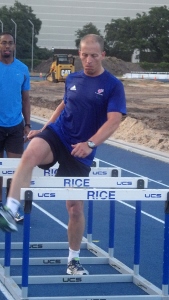 Knowing where you are going is essential before you start out on your journey (I have covered this previously in The power of goal setting). You need to know what you are trying to achieve this month, this week and today in your training.
Knowing where you are going is essential before you start out on your journey (I have covered this previously in The power of goal setting). You need to know what you are trying to achieve this month, this week and today in your training.
#Key tip 1: write down what you want to achieve for the month, for the week, for your next training session.
An example might be “I want to be able to run 5km in less than 20 minutes by the end of January. This week I will do a time trial and 3 other runs. Tomorrow I will run 1km fast, walk for 2 minutes and repeat for a total of 5 times“.
Your resistance training programme must be more specific than “best workout plans” gained from a magazine. Now you know what the aim of your session is going to look like, you can plan your warm up accordingly. Start with the end in mind.
If your session is running, or lifting weights explosively, then by the end of the warm up you should be performing activities that resemble that.
But, at the start, you will probably be feeling tired, stiff or lethargic after a day of school, work or from previous sessions. The picture of me is doing a pre track warm up, using hurdles to help warm up my hips.
#Key tip 2: You need to increase the range of motion, speed, and complexity of movements gradually in your warm up.
(Read more on how to design your warm up).
Adaptation
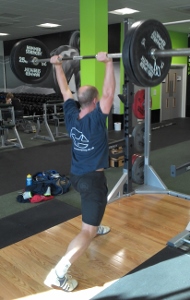 This is the meat of your training session. What changes are you trying to make in your body? If it is to get stronger, then what movements are you trying to get stronger: a push, pull or a squat? Are you trying to develop speed? Then you need to be putting fast work in here.
This is the meat of your training session. What changes are you trying to make in your body? If it is to get stronger, then what movements are you trying to get stronger: a push, pull or a squat? Are you trying to develop speed? Then you need to be putting fast work in here.
If your goal is to increase speed, then what aspect of speed: acceleration, deceleration, maximum speed, repeat speed, reaction speed?
Here is where your exercise choice, equipment choice, rest periods and amount of work done need to reflect the aim of the session. It is a common mistake to see a new exercise or new piece of kit and then jump straight into using that, without knowing why.
#Key tip 3: Make sure your choice of exercises reflects the aim of the session, rather than dictates the session.
For example, you read about Mo Farah’s 120 mile a week training and you see that he does a circuit in the gym. You copy that circuit without knowing why he is doing it, or even if it helps him. Worse still, you are a 15 year old runner with very little training background, you are in danger of getting hurt!
Here are two example session plans for rugby players (other sports can follow the same principles), one in the field and one in the gym: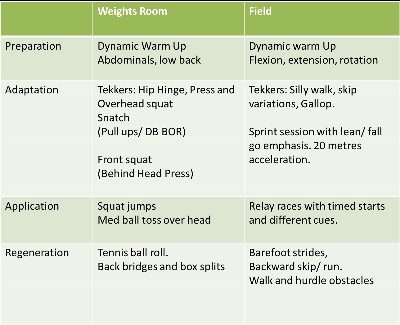
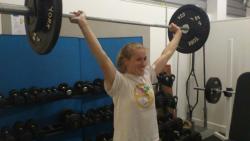 I have left the sets/reps and loads blank because that is down to each individual. But the adaptation theme is for lower body strength in the gym, and for acceleration up to 20 metres on the field.
I have left the sets/reps and loads blank because that is down to each individual. But the adaptation theme is for lower body strength in the gym, and for acceleration up to 20 metres on the field.
I usually recommend using only 2 major lifts, plus minor lifts around that in the gym. The exercises in brackets will be lighter loads and are complementary to the major lifts. This allows you to practice those movements in what otherwise would be down time. (Picture is of hurdler Becky Brown doing the power snatch).
#Key tip 4: Makes sure you work hard on the adaptation part of the session, allowing adequate rest between the major exercises (unless work capacity is your goal and rest will be reduced).
(See how this works in practice with young athletes )
Application
This is the dessert of the session, or indeed the week. It is very,very easy (and common) to get caught in a numbers trap in the gym or field.
But, unless you can apply your new found strength, speed or endurance on the field/court/mat or track what is the point?
An example would be squash players only running on treadmills to improve their VO2 max (aerobic endurance) score to satisfy the physiologists who are unable to measure endurance where it counts: on the squash court!
Your body has undergone some fatigue in the adaptation part of the session. It will remember this fatigue: you will be slower, weaker or more tired after this (every time you put a barbell on your back you move slower).
Now you have to teach your body how to apply better movement that resembles or even better, replicates movements in your sport.
This may mean getting out of the gym to run, jump or throw things! (picture is of Modern Pentathlete Greg Longden doing some hurdle jumps after squats).
#Key tip 5: Get your body moving faster, further or in a complex pattern at the end of your training session.
This video shows an example of a good application exercise: the fire hydrant start.
Regeneration
Finally we come to regeneration. This includes physical, mental and emotional recovery, repair and renewal. The cool down in the session should gradually restore your body to its resting state, rather than stop abruptly.
If your training session has included a lot of one type of movement, then you might need to do some of the opposite movement in the cool down to restore balance. This video shows an example of what to do ensure your shoulders and back stay healthy.
You need to think about what food and water you consume immediately post training, and later that day or evening (you will have prepared this previously of course!)
You need to think about showering or bathing (I work with school age rugby players, so please forgive me as assuming this is a given is a mistake) as this can help speed the recovery process.
But, what is often forgotten is the fact that you need time away from your sport (and especially team mates) so that you return to training refreshed and invigorated. Of course, for some of you, your sport is your time away from work/ family and is your chance of regeneration.
# Key tip 6: The most important recovery tool is sleep, and all your post training activities should be designed to help increase the quality and quantity of your sleep.
Read more here about our recovery pyramid and how much sleep you need after training
Summary
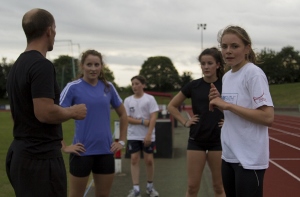 I hope this has given you some insights into how to take charge of your fitness training. These methods work with the athletes I coach, whatever their sport.
I hope this has given you some insights into how to take charge of your fitness training. These methods work with the athletes I coach, whatever their sport.
(This does apply to females too, read more from one female coach here)
The detail of each session is changed according to the sport, but more importantly to the individual person.
If you would like to benefit from this type of training, then you might want to use the programmes contained in my 3 books: Run Faster, Get Stronger or Jump Higher (all are readable on tablet, or pc and contain detailed training programmes with video clips).
Or, if you want individual advice please contact me here
Good luck.
Client Testimonials
 Middlesex LTA
Middlesex LTA
James has been training the top performance players in the county and has proved a great success. The sessions are well organised and the feedback and the programmes given to the players are excellent.
More


Comments
[…] How to take charge of your fitness training […]
[…] How to take charge of your fitness training […]
[…] How to take charge of your fitness training […]
[…] If you want to know how to fit the deadlift into your resistance training then see this guide on creating your own training programme. […]
[…] Strength training programme: a detailed guide on how to plan your weights session. […]
[…] Better to follow a structured training programme […]
[…] How to take charge of your fitness training: How to make your strength training specific to your sport and you as an individual. […]
[…] How to take charge of your fitness training My detailed overview of how to design your sports performance training plan in the gym. Takes a look at how to become a better athlete, rather than follow the generic strength and conditioning herd. […]